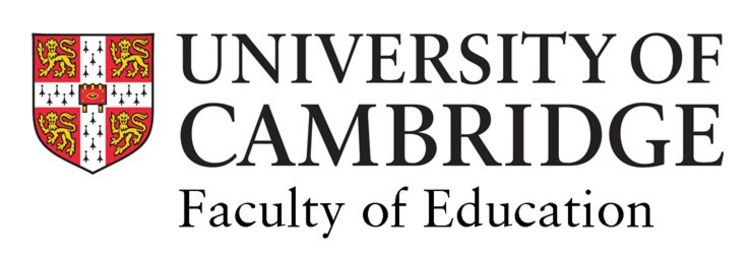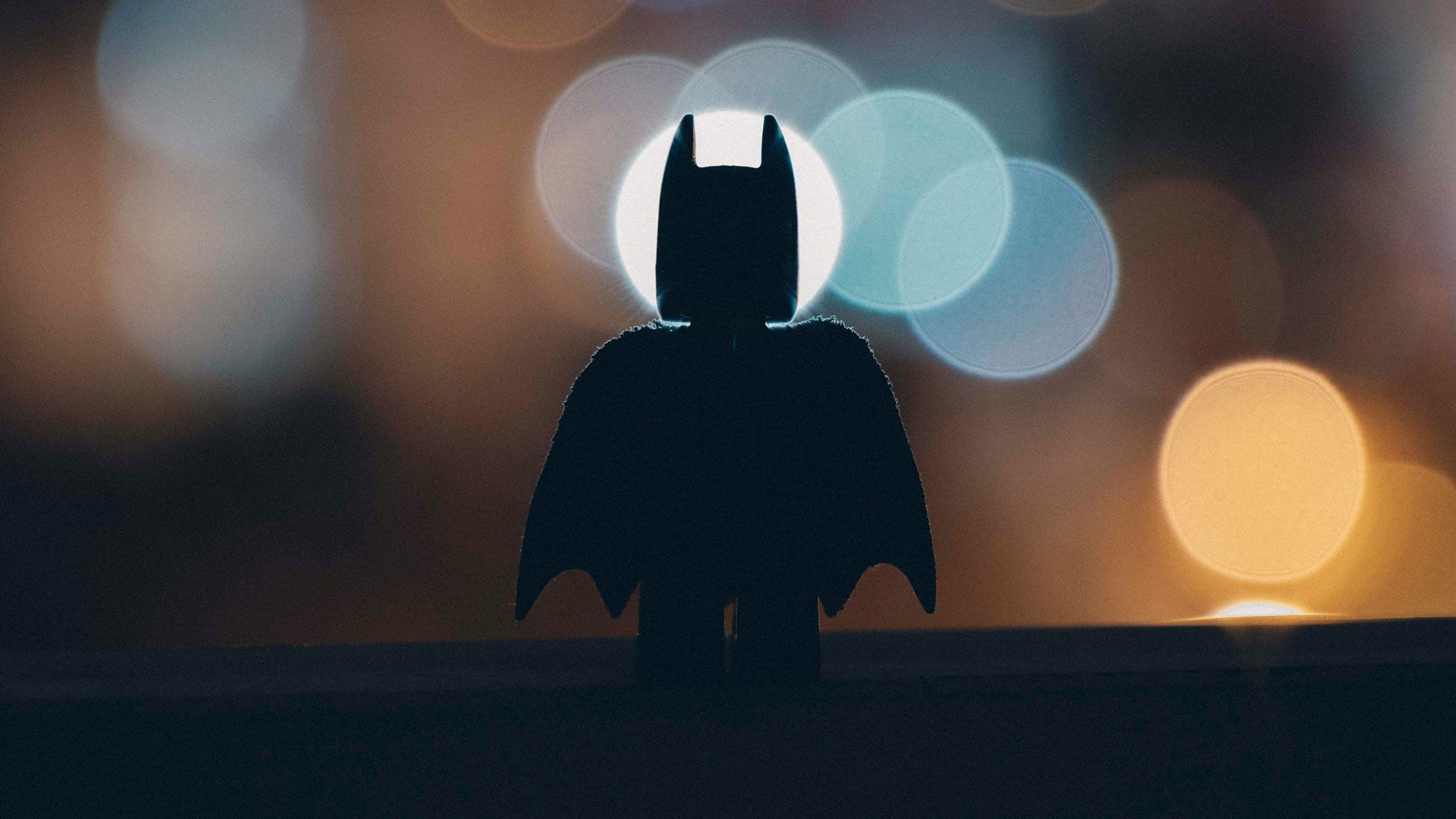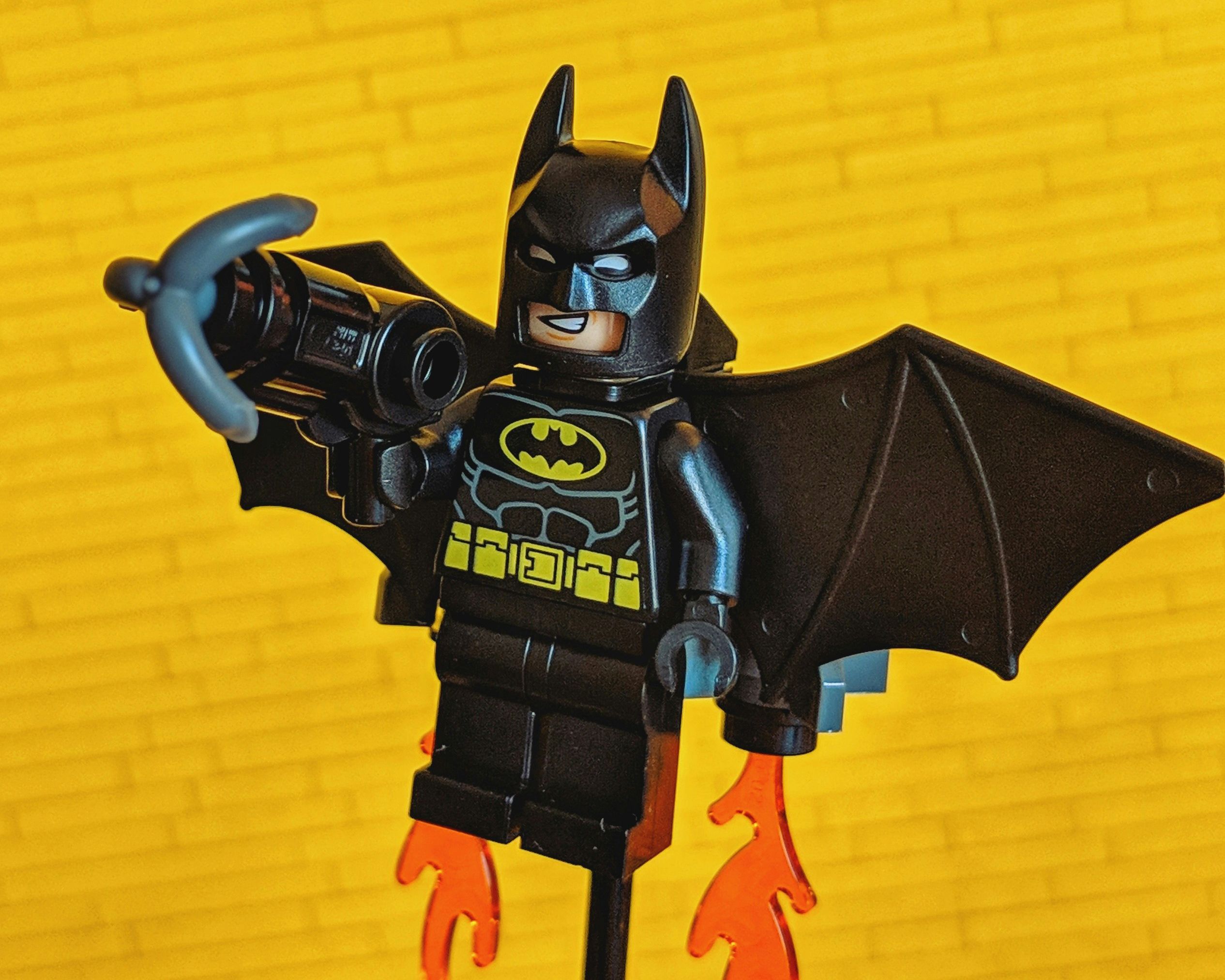

Batman Returns.
Again.

Batman. Batman Returns. Batman Begins. Batman: The Animated Series. The Batman. The Dark Knight Rises. Gotham. Pennyworth. Batwoman. The Penguin. The LEGO Batman Movie. And right now, possibly playing at a theatre near you: Joker: Folie à Deux.
If there is one cultural addiction that exemplifies the state of having had enough of something while constantly craving it more, it is, surely, society’s obsession with Batman: that mysterious, pointy-eared comic book vigilante; alter-ego of billionaire industrialist Bruce Wayne; and spandex-clad chiroptera-based warrior hero, repeatedly saving Gotham City from impending criminal carnage.
Indeed, the list above barely scratches the surface of the ever-expanding Batman universe. Having first appeared in a comic in 1939, the caped crusader has featured in more than 40 films or TV shows this century alone, many of which were blockbuster hits. And that’s not even counting the comics, novelisations, video games, toys and works of fan fiction that have further enriched the Batman franchise.
Truly, this is the age of Bat-mania, and just this summer Amazon launched a new, 10-part animated series: Batman: Caped Crusader.
The show has a stripped-back style, diverse characters, and a grittier, almost nastier, version of the eponymous hero. It also nods to the animated series of the 1990s, which is loved by millions of fans as one of the most iconic versions of Batman ever produced.
That earlier TV milestone is the subject of a book by Joe Sutliff Sanders, an Associate Professor at the Centre for Research in Children’s Literature, University of Cambridge. As a lifelong Batman fan who has studied it from an academic standpoint, there seems no-one better placed to dissect Caped Crusader as it takes its place in the Bat-canon.
Here, Joe shares his thoughts on the new series, his own evolving connection to its protagonist and – crucially – whether, in 2024, we really do need yet another Batman…
"Batman" was actually the second word I learned to spell
Joe Sutliff Sanders
Joe Sutliff Sanders
I wouldn’t be able to claim a single academic specialism – my work has covered classic girls’ fiction, children’s non-fiction, meta-fiction, comic books and graphic novels among other things – but I do have a very specific interest in Batman.
The first word I learned to spell was my own name, but at the time I was learning my letters, the old Adam West live-action Batman was on TV. I remember watching it on a little black and white television. At the beginning, they spell out the letters in the title sequence, which helped develop my emerging literacy skills!
What I remember really liking about that series was the costumes – not the bright, silly, campy aspects – but the boldness, the confidence the hero had in his identity. I also liked its melodrama. The 1966 Batman had a certain formula, a cliffhanger structure, and I liked grasping that on my own terms, and enjoying the surge of excitement it allowed you to feel. Between that series and the comics I found very early in life, Batman rapidly became my favourite comic book hero.
The character has meant different things to me at different times
There’s a theory in literary studies that texts endure not because they’re of the greatest quality, but because they remain relevant to successive generations. If you think about Shakespeare, for example, the plays we value today weren’t necessarily the most popular centuries ago, nor do we find them interesting and important for the same reasons as people did in the past.
In a similar way, Batman has represented various, sometimes contradictory ideas, for me throughout my life. At university, one of my best friends and I had birthdays two days apart and we were both into Batman. Then we discovered that in Batman lore, the moment in the Batman story where the character is first formed was on 26 June – the day between our birthdays! For years, we threw a ‘birthday party’ for Batman, mainly as an excuse to socialise and drink too much.
At one point, I really admired the character’s self-discipline and commitment to being the best human he can be. Equally, there was a time when I pushed back against the character’s right-wing overtones. After all, Batman is a rich guy who drives into town, beats up poor people and then returns to his mansion, where his butler looks after him. There was a period in my life when Batman therefore became a tool to reflect on ideas about justice, rehabilitation, and the limits of democracy.
I come back to the character again and again because at different times it has enabled me to think about a range of ideas; often complex, moral issues. That’s one reason why children’s and youth literature matter – they offer ways to engage with a whole range of questions, including difficult ones.
Batman is fragile. He navigates situations by balancing his strengths and vulnerabilities.
Batman’s enduring appeal is, I think, down to two things
First, he is an extraordinarily well-crafted character who blends multiple genres. Batman has elements of gothic, detective, romance, adventure and science fiction and draws strength from all those genres. He also has limitations which prompt creative storytelling. Unlike, say, Superman, Batman is fragile. He navigates situations by balancing his strengths and vulnerabilities, which makes it possible to tell lots of different, compelling stories about him.
More pragmatically, Batman arrived at a particular moment in the emergence of multinational, multimedia serial fiction. DC Comics and its parent companies have a vested interest in continually producing new material, adapting to the changing needs of the public to keep profiting from him. I like to think that my connection to Batman is personal, but I am also part of that cultural moment. Serial fiction has many drawbacks, but one of its great advantages is that it has to be on the pulse of what audiences want. This, also, is why Batman is continually reinvented.
Batman: Caped Crusader is very conscious of the history of which it’s a part, but there is plenty for new fans.
I watched the show with my family, who are also Batman fanatics! My kids pointed out that it’s very good at making itself available to new and old fans. For example, the show will drop in someone’s name and seasoned fans like me will know who that character is going to be. But at the same time they create space to give the newcomer authority and agency to build a relationship with the character.
A good example is the use of Harley Quinn, a character who is also central to the new Joker movie and is currently the second most popular DC character after Batman himself. Quinn is an invention of Batman: The Animated Series. So, when you first meet her in the new show, there are various subtle nods to old fans who know who she is destined to become. But, in Caped Crusader, Quinn also has a new origin story, motivations and MO. Both audiences therefore discover her on their own terms.
The series is a deliberate break with the type of Batman we’re used to seeing.
One striking aspect is how heartless Batman appears. In the past 20 years, considerable effort has gone into interpretations in which, while he projects a cold front, he’s actually invested in healing and protecting people. That’s missing in this version. For example, he’s quite unkind to Alfred, his butler; a relationship which has formed the emotional core of some of the recent films. I’m excited to see where this new character arc leads, given how it’s started.
This Batman also feels more like a 1940s action hero. He stands still and engages in fisticuffs until someone is beaten down. This is a contrast with recent portrayals, where Batman was all about strategy and preparation. While this makes the new version seem more violent, I’d argue he is also more naïve: he is more enthusiastic about the war on crime but lacks cunning.
Many people see this show as a spiritual successor to the 1990s cartoon and it certainly draws visual inspiration from it. Batman: The Animated Series had a design style very similar to 1930s Streamline Moderne, which was dubbed “Dark Deco”. The new series echoes that, but the tech is even older, which again breaks with the modernity of recent portrayals. It’s not a prequel to the earlier animated series, but it feels like one.

We are also seeing much more gender diversity in this version.
At its best, the new series offers non-tokenistic ways to tell diverse stories. Back in the 90s, the animated series did have some implicit LGBTQ+ relationships, but they were ambiguous. There’s nothing subtextual in this one, and its gender diverse elements are used to give the story and characters real emotional weight.
This brings us back to the point about Batman being successful because he means different things to different people at different times. Right now, I think we are thirsty for ways to talk about diversity that are non-tokenistic. For example, conservative complaints about the continual foregrounding of EDI issues, if you treat them with respect, are often not objecting to that cultural representation, but to the fact it feels tokenistic and forced. The best moments of this new Batman series show how that challenge of handling gender diversity naturally and unperformatively, can be addressed. It doesn’t feel like box-ticking.
Is there a risk of too much Batman? Absolutely. But it’s difficult to exhaust his potential.
I would urge anyone watching this, or any new Batman release, not to form opinions too hastily. It’s 10 episodes old. Frankly the first 10 episodes of Batman: The Animated Series weren’t great. The first series of Seinfeld was terrible. Parts of the first two seasons of Star Trek: The Next Generation are unwatchable. All those now rank among the greatest television shows ever made.
If you’re watching this thinking we’ve had too much Batman – yes, absolutely! But like this new version, every so often the pendulum swings in a new direction compared with what has gone before. That allows audiences to find the Batman they need. Give it time, and this meaner, more naïve characterisation, with its mix of modern values and retro stylings, could mean something fresh and exciting for new and old audiences alike.
Photos (top to bottom) by Sajjad Ahmadi on Unsplash; Cassidy James Blaede on Unsplash

